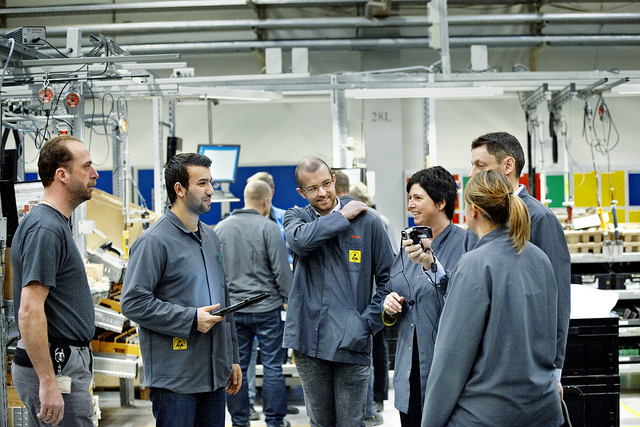Union representatives
Guide: Organising at work with IDA’s support

A part of
About IDA1. Choose your form of workplace organisation
Employee representation in Denmark is usually organised around groups or clubs based on trade union affiliation and/or professional qualifications. At larger workplaces, there may be more than one group/club, each representing a group of employees.
If you are 5 engineers/MScs or 5 academics in your workplace, you can form a company group (virksomhedsgruppe) or and academic club (akademikerklub).
The difference between the two types of organisations is that a company group consists of only engineers/MScs while an academic club consists of members from all the trade unions for academics – such as IDA, DJØF, DM or PharmaDanmark.
The most appropriate type of group to create varies from company to company. Some companies primarily employ engineers/MScs and not other academics, so it makes sense to create a company group. Other companies have a more even distribution of academics, so it may be best to create a joint club with other academics.
2. Get collegial support
If you would like local organisation at your company, either in the form of a company group or an academic club, you can - in collaboration with IDA - organise an information meeting or an actual general meeting. IDA is happy to help you send out invitations to IDA members at the company.
The information meeting will typically consist of presentations from one or more people who want to organise. In addition, a consultant from IDA will be happy to attend and talk about the rules and rights that apply to privately employed union representatives and how IDA can support the work both before and after the organisation with tools, training and, in some cases, financial support.
3. Hold a founding general meeting
If there is support for local organisation, a founding general meeting can either be held in continuation of the information meeting, or a general meeting can be called once it has been clarified whether there is support for forming a company group (VG) or an academic club (AK). It is a good idea to post an invitation on your company intranet if you can, and generally spread the word among your colleagues and management, for example via HR.
You can find the standard statutes for a company group and an academic club below:
- Download statutes for company groups (in English)
- Download statutes for company groups (in Danish)
- Download statutes for academic clubs (in English)
- Download statutes for academic clubs (in Danish)
- Download statute for public sector academic club (in Danish)
- Download statute for public sector IDA clubs (in Danish)
4. The board is constituted
After a successful general meeting, the newly elected board must meet within a week and be constituted with elections for chairperson and vice chairperson. IDA has standard statutes for academic clubs and company groups, respectively, that you can use as a starting point (see links above).
The number of board members depends on how many employees the company has. If there are fewer than 10 employees, a chairperson is sufficient. If there are more than 10 employees, there must be a minimum of 3 ordinary members and a maximum of the same number of deputies as ordinary members.
5. Register your group/club
When the board is constituted, it must be reported to IDA or another servicing organisation.
If it is an academic club and the board consists of members from several professional organisations, it must be reported to the respective organisations, which then report the elected representatives to the company. If an academic club has been established, it is typically the organisation that represents the most members that provides the service.
If it is a company group, it must always be reported to IDA.
The board is assigned a permanent legal contact person, who the chairperson and vice chairperson can contact about specific issues in the workplace.
Your legal contact at IDA can provide advice and sparring within employment law, labour law, pay and negotiation in general.
6. Allocate responsibilities
IDA recommends that one of the first things you do is to sit down as a board and define the purpose and related tasks of the board.
It's a good idea to divide the roles between you. For example, it could be:
- Who takes care of inviting new employees?
- Who convenes the general meeting?
- Who will maintain the membership list?
- Who should be in dialogue with management and, for example, hold coffee meetings with HR?
Get support from IDA
- IDA supports financially with grants for organising general meetings, as well as other events.
- View tools, statistics and calculators for elected representatives (in Danish)
- Take a union representative training programme: With IDA's union representative training, you ensure that you are best equipped for the role. This can include board training, salary negotiation courses and much more.
Contact business consultant Marie Schmidt Sørensen at msn@ida.dk or 33 18 47 10 to hear more.
Do you already have employee representation?
Before you start organising, it’s a good idea to check if you already have employee representation in the form of a company group or academic club.
You can use IDA’s online form to search for union representatives in your company and contact them for more information.
Choose “Tillidsvalgte” and select your sector and company for contact details.